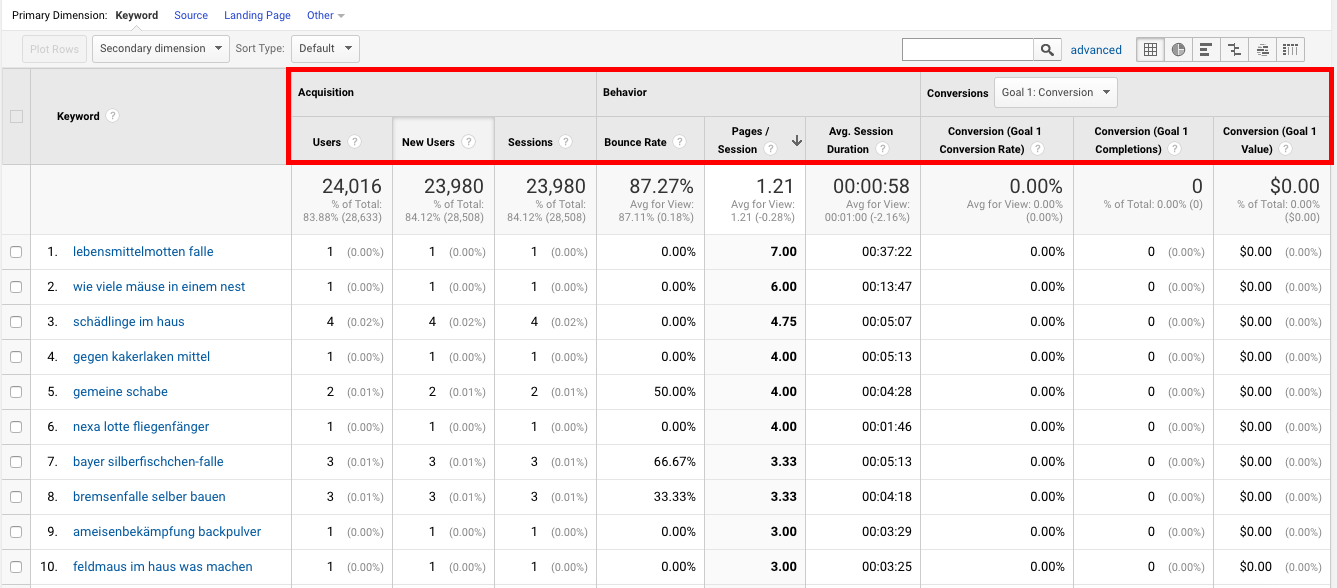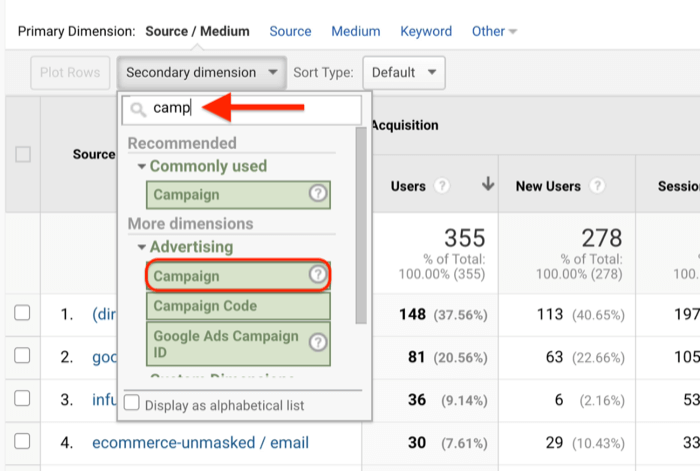The Importance of 'Secondary Dimensions' in Google Analytics: In-depth Analysis
The Importance of 'Secondary Dimensions' in Google Analytics: In-depth Analysis
Blog Article
Navigating the Depths of Additional Dimension in Google Analytics: An In-depth Exploration on Its Capability
In the realm of electronic analytics, the complexities of data interpretation often hold the trick to unlocking valuable insights. Within the large toolkit of Google Analytics exists a feature that offers as a surprise gem for those that seek a much deeper understanding of individual behavior and web site performance. Additional measurements, though seemingly uncomplicated in the beginning glimpse, nurture a riches of untapped potential waiting to be harnessed. As we get started on this journey to explore the nuanced functionality of secondary measurements, we will uncover exactly how this function can illuminate patterns, unveil relationships, and eventually lead the way for informed decision-making in the digital landscape.
Recognizing Secondary Dimensions in Google Analytics

Understanding just how additional dimensions job is essential for leveraging the full power of Google Analytics. These dimensions aid you answer a lot more intricate inquiries concerning customer habits and the effectiveness of your internet site material and advertising initiatives. You can utilize second dimensions to evaluate which browsers or gadgets are most generally made use of by site visitors that make a purchase, or to contrast the bounce rates of different website traffic resources. By combining main metrics with additional measurements, you can obtain important understandings that drive informed decision-making and optimization strategies - what is a “secondary dimension” in google analytics?.
Leveraging Secondary Measurements for Information Analysis
Building upon the foundational understanding of how secondary measurements boost data evaluation in Google Analytics, the application of these added layers of information comes to be vital in extracting important understandings for educated decision-making and optimization approaches. By leveraging second dimensions, experts can dive deeper right into the efficiency metrics by adding even more context to the key measurements, therefore revealing concealed patterns and correlations that might not appear initially look. This much deeper level of evaluation enables companies to better comprehend user habits, identify patterns, and determine areas for improvement.
Furthermore, second measurements offer a more detailed sight of the data, allowing for division based upon various criteria such as demographics, devices, web traffic sources, and more. This division promotes an extra granular analysis, making it possible for services to customize their approaches and campaigns to details audience segments for enhanced targeting and personalization. In significance, the critical usage of secondary dimensions equips companies to make data-driven choices that drive growth and success in the digital landscape.
Advanced Techniques for Second Dimension Implementation
Exploring elaborate methods to harness the full possibility of additional dimensions in Google Analytics raises the deepness and class of data analysis for critical decision-making. One sophisticated technique for executing secondary dimensions is using custom-made measurements. By specifying personalized dimensions, users can segment information better to gain more details understandings into user habits, such as tracking communications with particular elements on a page or checking the efficiency of a specific marketing campaign. An additional innovative technique is the usage of regex (routine expressions) within second dimensions. Regex permits more powerful and versatile pattern matching, allowing customers to develop complex filters for information analysis. Additionally, combining additional dimensions with advanced sectors can supply much more granular insights by applying numerous layers of segmentation to the data. This approach permits a much deeper understanding of user actions based upon various requirements all at once. Executing these advanced strategies for second measurements in Google Analytics equips individuals to conduct much more innovative evaluation and make data-driven choices with precision.
Interpreting Insights With Second Dimensions

When analyzing insights with second measurements, it is crucial to think about the context of the data and exactly how different measurements engage with each various other. For instance, understanding which details website traffic sources lead to higher conversion prices or identifying which tools users favor for making purchases can give actionable insights for maximizing advertising and marketing projects and improving total site efficiency. By thoroughly taking a look at the information visit this site with additional measurements in mind, services can make enlightened decisions that drive significant outcomes and boost their electronic visibility.
Optimizing Performance With Secondary Dimensions

One key way to enhance performance with additional measurements is by segmenting information more granularly. This allows you to isolate particular variables that may be affecting your metrics and acquire a far better understanding of what drives success or failure in your digital campaigns. By incorporating secondary measurements such as 'device category' and 'landing web page,' you can determine which device kinds are most reliable for specific landing pages, enabling you to customize your methods accordingly.
Additionally, utilizing additional dimensions can assist you determine trends, patterns, and correlations that may not be apparent when analyzing information with primary measurements alone. This much deeper level of analysis can cause even more educated decision-making and ultimately enhance the total performance of your website or digital advertising and marketing campaigns.
Conclusion
Finally, second measurements in Google Analytics play More about the author a critical role in boosting data analysis and supplying deeper insights right into web site efficiency. By making use of innovative methods and analyzing the information successfully, organizations can maximize their methods and improve total efficiency. Understanding the functionality of second dimensions is necessary for making educated choices and driving success in the electronic landscape.
By leveraging second dimensions, analysts can dig much deeper into the performance metrics by adding more context to the primary dimensions, thus uncovering concealed patterns and relationships that may not be noticeable at very first glimpse. One sophisticated method for applying additional dimensions is the use of customized dimensions.Having actually mastered sophisticated methods like custom-made measurements and regex for secondary measurement application in Google Analytics, the next vital action is analyzing the useful understandings obtained via these innovative data division methods. Interpreting understandings via secondary measurements includes analyzing the partnerships in between the secondary and main dimensions picked, revealing patterns, trends, and connections that may not be immediately evident when looking at the information in its entirety.When interpreting insights with secondary measurements, it is crucial to think about the context of the information and how various measurements connect with each other.
Report this page